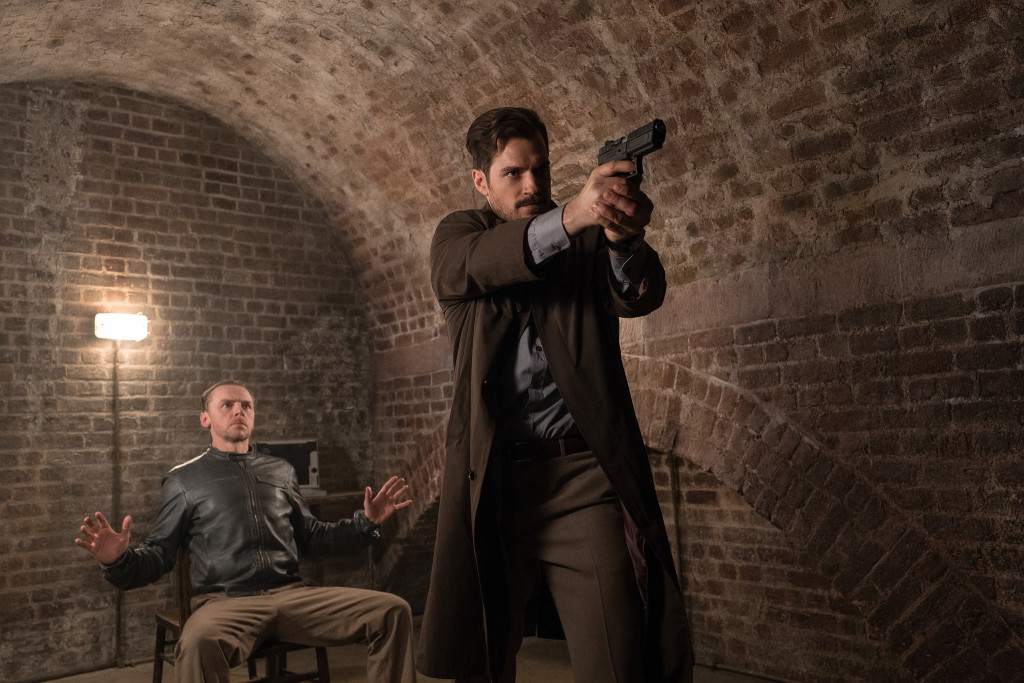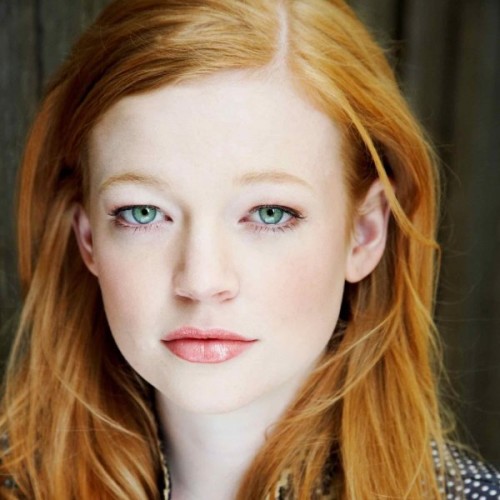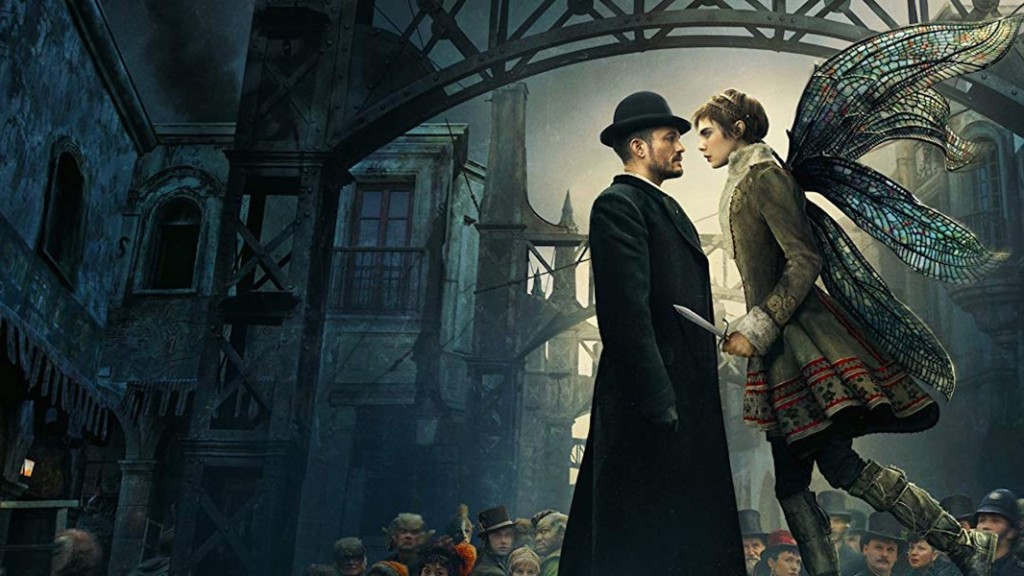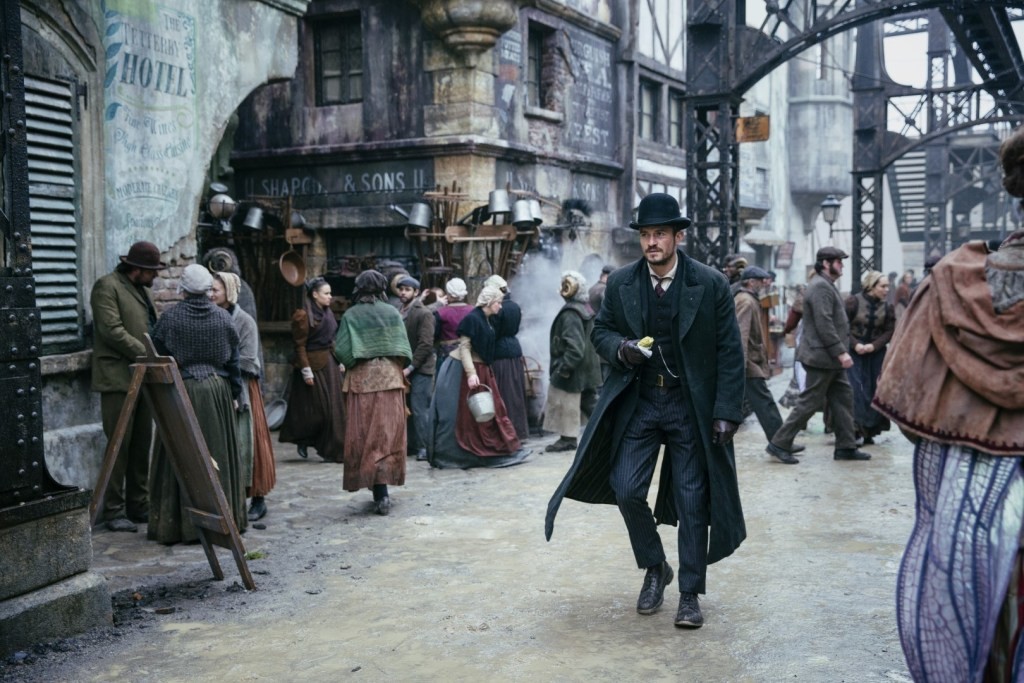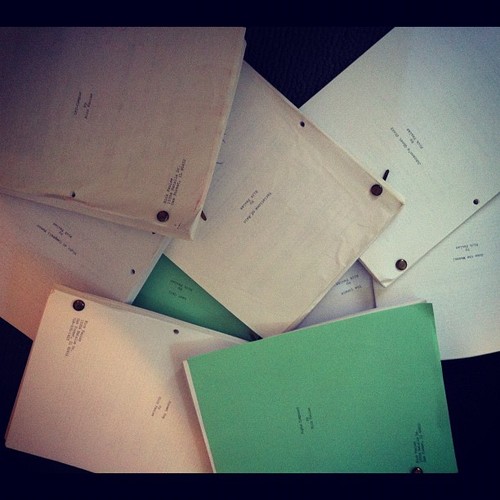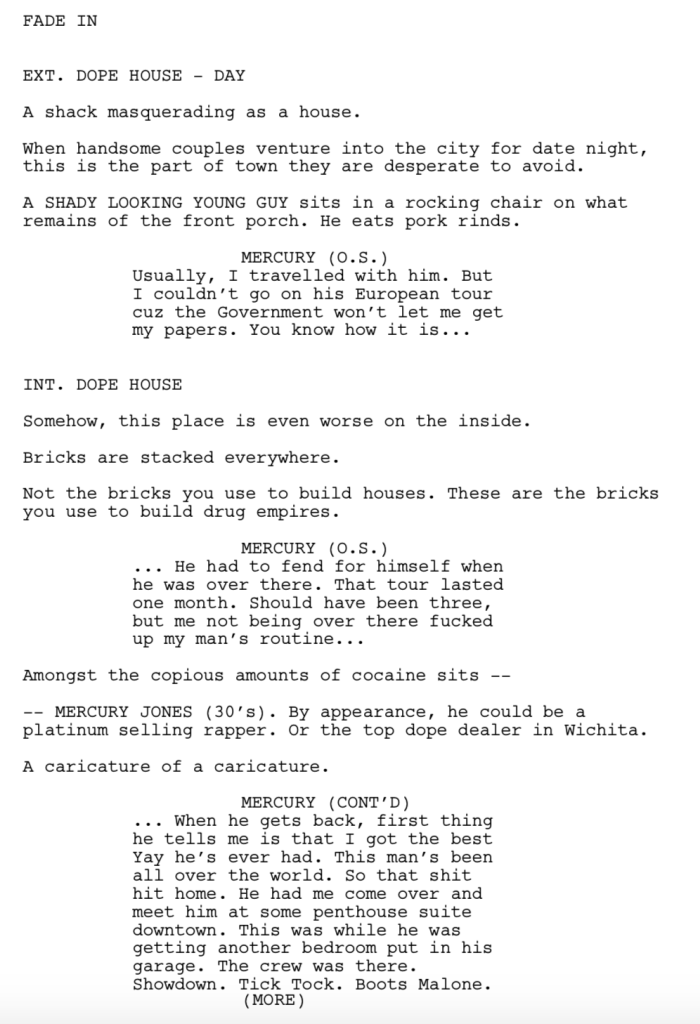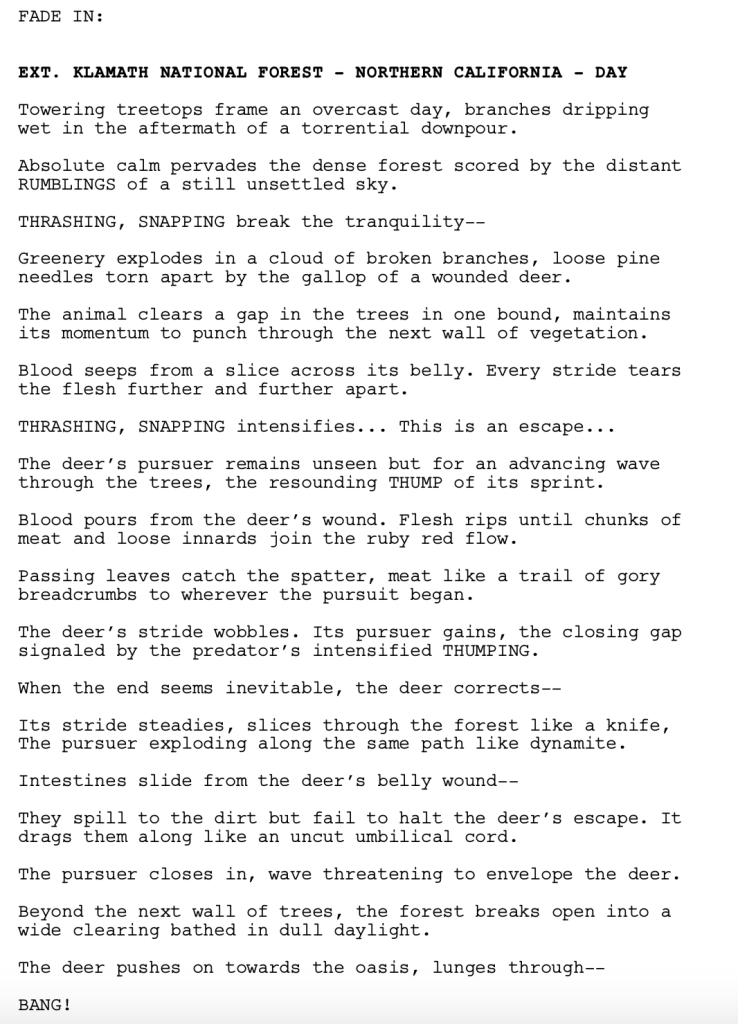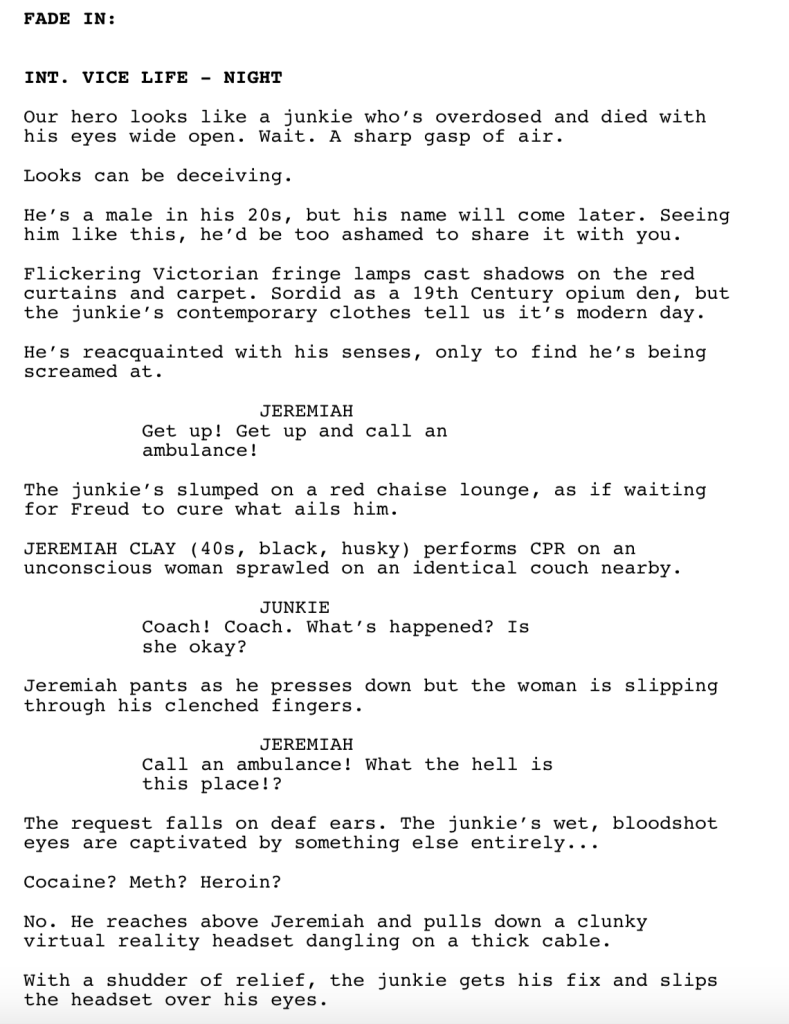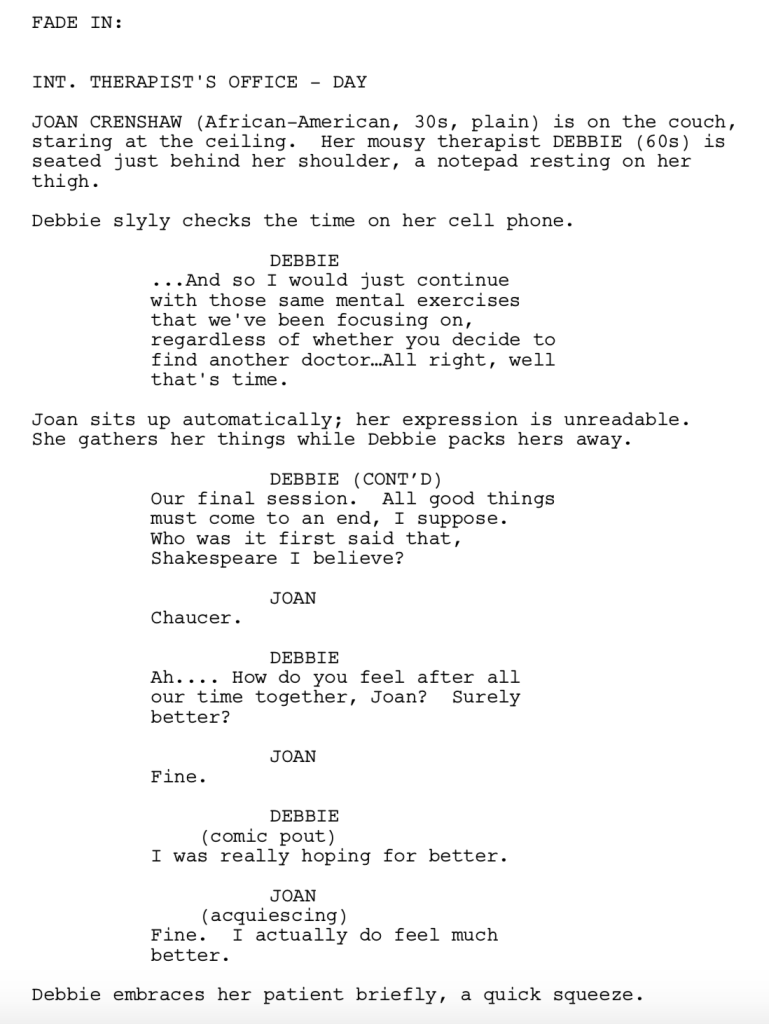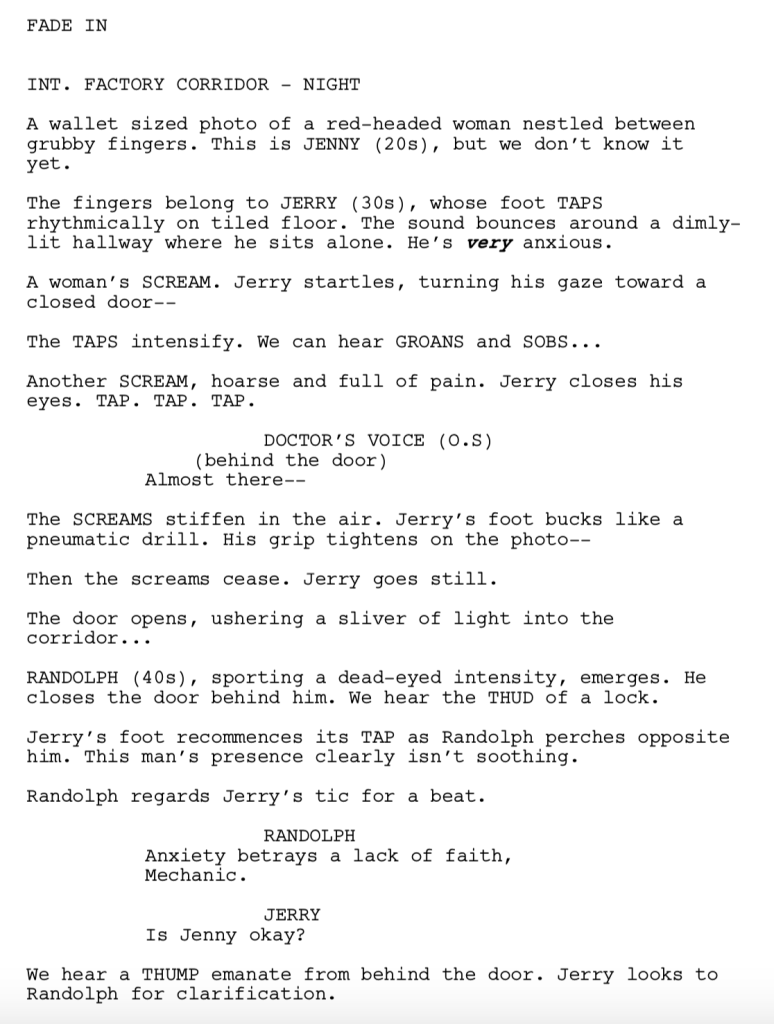Might we have another highly reviewed amateur script on Scriptshadow? Read today’s review to find out!
Genre: Thriller
Premise: Trapped in a secluded cabin, a hunter and his daughter fend off attacks from a relentless grizzly bear hell-bent on vengeance for the death of its cub at their hands.
Why You Should Read: I vividly remember the sensation of being stalked by a black bear during one summer visit to the Sierras… Well, stalked is a bit strong – it passed me within grabbing distance. Still, the feeling of power in its gait, the potential explosion of ferocity if it so pleased was unsettling and stuck with me ever since.
Writer: Walon Costello
Details: 84 pages (just to be clear, that this is an UPDATED draft from last week. Walon addressed some of your notes)
I’ve got one question.
Did Walon write this script in one day?
Because Wednesday I reviewed a nature thriller and all I talked about was how a lack of character development hurt the script. I read a nature thriller today and… IT’S ALL CHARACTER DEVELOPMENT. So either Walon read my complaints and wrote this in a day, or he has the ability to freeze time so that he can take as long as he wants to write a script.
I bet you’re wondering what all that character development did. Would it prove that I was right? Or would it turn out that all character development does is slow down a script to an unbearable crawl? Read on to find out!
Our teaser opens with a deer being chased through the woods by something unseen. Then, just as it makes it to a clearing, it’s SMASHED INTO by a car, which goes careening off the road. The driver, a man, is instantly killed. The woman in the passenger seat is going to wish her death was that quick. Because seconds later, a little bear cub comes in and starts nibbling on her dead boyfriend. Then, seconds after that, a much bigger mama bear arrives. And this woman turns into her lunch.
Cut to a week later and Hank (40) along with his daughter, Zoe (20), are driving through those same woods. They make it to an old gas station, where the car from the teaser is being kept until someone can come along and trash it. It’s here where we learn that that car and the people who were in it are the reason Hank and Zoe are here. The woman is Hank’s drug addict ex-wife, and Zoe’s mother. Since she wasn’t found in the wreckage, they’ve come up here to look for her.
The two head up to the family’s cabin which the mom was staying at. This once regal camping fortress is now a barely standing rotted-out piece of garbage. Hank and Zoe use it as a home base to go out and look for mom. They arm themselves just in case, and after a long search, Zoe notices something coming at her out of the corner of her eye, turns and shoots. She’s horrified to see that she’s killed a baby cub.
They get back to the cabin late and decide to stay for the night. But almost immediately, they hear something outside. It’s Mama bear (“Mama”). She’s come to get revenge. At first, Hank doesn’t give her any credit. She’s a freaking bear. Not John Wick. And even if she was the bear version of John Wick, she can’t break into a house. Well, that may be true. But remember, this isn’t exactly Fort Knox. And Mama starts prying for ways in.
Having left the only guns in the car, the two are forced to move around the cabin to stay clear of Mama, who has the added advantage of being a black bear in total darkness. We’re never quite sure where she’s going to pop up next. Finally, she’s able to get into the house. Zoe moves to the bathroom while the injured Hank finds another spot to hide. I don’t want to spoil anything but let me put it this way. Not everyone is getting out of this house alive.
First thoughts?
Overwritten first page!
I kept having to go back and read it over and over again. Walon was trying to be too cute with the wording. It may sound weird but he was TOO DESCRIPTIVE. And in trying to paint a picture, he painted a Picasso. It was angular and tilted and hard to make out what you were looking at.
So things didn’t start well.
However, once we get to Hank and Zoe, the script gets a lot better. Like I said, Wednesday we had no character development. Here, we have a lot. There’s a ton going on with these two. For starters, their wife/mother left them, became a drug addict/prostitute, and now drives around and robs people to feed her habit, along with whatever co-conspirator she can find.
This makes their search party complicated. Lesser writers would’ve had the mom be the perfect mother – her life robbed by the randomness of some angry animal. By making her a drug addict who’d abandoned her family, their connection with her is much messier. The reason why this tends to work better is because it mirrors real life. Real life is rarely drawn with straight lines. The lines are squiggly. And the color between them is gray. Just that choice alone made this feel authentic.
Also, Zoe is newly pregnant. And one of the ongoing themes here is the idea of, should Hank and his wife have had Zoe? They were way too young. They weren’t ready to be adults. And it turns out that maybe it was a mistake. Mom eventually prioritized getting high over parenting. We also learn that it was Hank who initially wanted the abortion. And now Zoe’s in the exact same spot they were, weighing whether she’s ready to be a mom, and using her own less-than-wonderful time on earth to decide if she wants her own kid to go through that hell.
In other words, THERE’S A LOT GOING ON HERE. And Walon is really clever in how he thematically connects their family troubles to the threat. Here these people are, weighing whether it’s right for their children to even be born, while Mother Bear will stop at nothing to avenge the death of her own child.
Another thing I liked that Walon did was he OPENED UP a portion of the CONTAINED THRILLER. I think that when we write contained thrillers, we get this idea that they have to be contained from start to finish, if only to convey to producers that it will be cheap to make. However, I like when contained thriller writers start their scripts OPENED UP so as to create the illusion of a bigger story. Between the teaser and seeing these two drive in and the gas station scene – it made the movie feel bigger than it was. Had Walon started this script with the two of them showing up at the cabin, I’m not sure I would’ve felt the same way about the script.
There were a couple of things I didn’t love. The script does get a little repetitive at times inside the cabin. There are only so many ways to stay away from a window. But the biggest issue was that dad and daughter don’t have anything unresolved with one another. Despite all of the intense stuff with mom, Hank and Zoe seem to be good. And I kept wondering if that could’ve been improved somehow. In fact, a couple of times I thought, “I wonder if this would be better if Zoe was trapped in here with her drug-addict mom who’d abandoned her?” You can imagine how much more tense those conversations would be.
Despite that, I thought this was a good spec. The best Amateur Friday script this year behind Cop Cam. I could easily see this pitched as “Jaws with a bear.” The problem with all the Jaws clones over the years is that they’re too similar to Jaws. This feels just enough like its own thing that you don’t find yourself constantly comparing it to that movie, which is the last thing you want to happen as a writer. You want your script to be your own, not some lesser version of a better movie.
I battled back and forth on this as far as whether to give it a single or double ‘worth the read,’ and I’m going to settle on a single because dad and daughter didn’t have anything to resolve with one another. And it wasn’t just that. It was that Walon was trying to make it seem like they were butting heads despite the fact that there wasn’t any reason to. For example, she kept calling him “Hank” instead of “Dad.” And all I thought was, “Wait, she likes her dad. Why avoid that title when addressing him?” If future drafts would address that, I could easily see bumping up the score.
But this was solid writing. Good job, Walon.
Script link (new draft): Grisly
[ ] What the hell did I just read?
[ ] wasn’t for me
[x] worth the read
[ ] impressive
[ ] genius
What I learned: Regarding the first page. Remember, all writers overwrite. But the good ones don’t make it LOOK like they overwrote.
A big complaint I had with yesterday’s script was that the character writing was too thin. The extent of the character work was that the main character was grieving the loss of their father. On the surface that sounds like a deep issue to explore. A family death is a tragic experience for most people. But that’s only if you actually explore it. If it’s something mentioned at the beginning of the script and then it never comes into play again, that’s not good character development. To be clear: If nothing “develops” then it’s not character “development.”
I received an interesting response in the comments section pointing out that in these quick thriller and action scripts, you don’t have time to develop characters. I’ve heard this argument quite a bit. And the people who use it actually go one step further. It’s not just that you don’t have time, they argue, but the audience isn’t interested in character development in movies like this. They just want to see volcanoes impale people. Or John Wick throw ninja stars at the bad guys. I understand what they’re saying because it’s partly true. People go to dramas to see character exploration. They go to action movies to see action.
But what they’re forgetting is that the degree to which your audience connects to your characters is the same degree to which they care during the action scenes. Have you ever watched the most amazing big budget action scene ever and yet been totally bored? Chances are, it’s because you felt nothing for the characters involved. Have you ever watched a garden variety action scene and been riveted? Chances are you felt a closeness to the characters akin to the way you feel around your best friends. The only difference between those two scenarios is character development. The writer is doing something with the characters that’s making you feel a greater connection to them.
So where did this “no country for character development in action” rumor begin? I suspect it comes from franchises like Mission Impossible, James Bond, and Fast and Furious. Because, yeah, there isn’t a lot of character development in those films. But that’s because those characters stopped changing a long time ago. These days they’re more like old friends who come around every once in awhile to catch up. This creates the false impression that, well, those characters aren’t changing, so mine don’t need to change either.
And they don’t. There’s no rule that says your character HAS TO DEVELOP. But if you want to create more of a connection between your audience and your story, character development is the bridge that’s going to take you there.
But what is character development? Why do people have such a tough time boiling it down? I don’t know and I don’t care. Because what I’m about to do is tell you the secret to great character development. Are you ready? Here it is: There are two stories going on. The story in your movie and the story in your character. In other words, your character IS A STORY UNTO HIMSELF. Once you internalize that, your character writing is going to increase a hundred-fold.
That’s because you’re not just trying to move your plot from point A to point Z. You’re moving the story within your character from point A to point Z as well. So let’s take a very simplistic view of this and use yesterday’s script as an example. The main character’s dad had recently died. That’s why our hero was going on this trip. Well, how do you build a story WITHIN THE CHARACTER about that? The most obvious way is that they haven’t been able to move past their father’s death yet. So point A is that they’re still consumed by the death of their father. Point Z, then, is that they’ve finally found peace with their father’s death. And there you go. That’s a character’s inner story right there.
Still confused? Go watch the Pixar movie, “Up,” where this exact same inner journey is explored. In that script, the writers explored the hero’s issue through his refusal to connect with others. He’s been so hurt by his wife’s death that he doesn’t let anyone else in. So what happens? A little kid keeps trying to get in and get in and get in, until our hero’s defenses finally break down. By accepting this new friend into his life, he has finally gotten over his wife’s passing. Was this harder to write then simply having an old guy and a kid go on an adventure together? Of course. Which is why most people write that version. But if you want to affect people, you have to write the version that has inner character stories as well. It will take you longer but I promise it will be worth it.
And the great thing about a character’s inner story is that it doesn’t have to be one thing. It can be about moving past something. It can be about a deep set flaw that’s holding someone back. It can be about one’s struggle with an addiction. As long as you explore it in an honest way and that there’s some level of CHANGE in the character (they go from point A to point Z by the end of the script) then you’re writing something better than the average bear.
But how do you find these things, Carson? What kind of inner struggles are going to work in a movie about running from killer robots or hunting down Russian gangsters who killed your cat? The universal kind. The kind all of us go through at various points in our lives. Start with yourself. What are the major flaws holding you back in life? Do you constantly doubt yourself and therefore never take chances? Are you afraid to get close to people so you put up a wall? Do you put your work over your family? If you can’t find anything in yourself that works for your hero, move to friends and family. It’s easier for us to see our friends’ flaws than it is our own. Does someone not stand up for themselves enough? Is someone too close-minded? Does someone spend all their time planning for the future as opposed to living in the present?
Once you understand what a person’s flaw is (Point A) you understand where you need to take them (Point Z). You just have to make sure you check in on the inner story throughout the outer story. If a character only thinks about the future, you’re going to add 7-8 scenes (think of these as “Check In Scenes”) throughout the script where they’re given opportunities to enjoy the present and argue with other characters about why their way is the right way. I’m making it sound easy even though it’s not. You have to do all of this in a way that’s seamlessly integrated into the plot. The conversations can’t be on the nose. They have to seem spontaneous and organic to the place and time. But I’m telling you, your script is going to be better for it. Think of it this way: When you include a character’s inner story, the audience is getting two stories for the price of one.
And I’ll finish this by reiterating something it took a long time to learn: Hollywood has a million people who can put together a plot. But there are only around 100 who can create compelling characters. Which is why those writers are the most coveted. Do with that info what you will! :)
Genre: Nature Thriller
Premise: (from Hit List) A young woman grieving the death of her father, along with several other strangers, must survive the Cascade Mountains in the aftermath of a catastrophic natural disaster…only to realize that their greatest threat isn’t nature itself, but someone within their group. Inspired by the true violent history of the famed Cascade Mountain Range.
About: This script made last year’s Hit List with 17 votes, putting it near the middle of the list. It hasn’t yet sold.
Writer: Larry Lasky
Details: 93 pages
The nature thriller is a legit genre.
Get a few characters (or even one character), throw them into an ugly nature-centric debacle, then let the drama unfold!
However, what I’ve found with these scripts, is that they often feel like the little cousin of the more fantastical “people in peril” scripts. How can trying to survive a hike compete with a bunch of huge dudes being hunted down in a forest by an alien predator, you know?
So Lasky’s decision to explore a “go-between” version of these two worlds was a clever one. This isn’t, “a group of hikers get lost and run out of water then must find their way back to society.” There’s giant toxic smoke clouds chasing them in one direction and slithering pools of lava coming at them from the other.
And Lasky knows how to get you pumped for it. If you don’t want to read this script after reading the first page, you’re one stingy reader. That snazzy opening gives you a quick rundown of the Cascadia Subduction Zone, the 700 miles that connect the Pacific seabed with the Pacific Northwest. While we’ve been freaking out about the San Andreas faultline this whole time, it was recently determined that Cascadia is much worse.
20-something Hannah Rhodes is heading up to the Cascade Mountains to do the group hike she used to do with her dad all the time. Ever since her father died, Hannah’s been having issues with her mother to the point where they’re not talking. So she’s got a lot of emotions going on when she shows up for the trek.
She meets the rest of the hikers: Ryan, a cute guy her age, Nico and Gwen the couple who can’t stop making out, Javi, the cool motorcycle guy, Philip and Mei, a Chinese couple, and Walt, the old timer. After they exchange pleasantries, their guide, 30-something way-too-intense Shane Decker, shows up. Decker’s like, “Let’s roll” and off they go.
Mere hours after they begin their trek, an earthquake hits. Decker says not to worry. This is a high-frequency earthquake zone. But later on, another one hits. And this one is HUGE. How huge? They watch a mountain in the distance crumble like an anthill. A few minutes later, Philip is swallowed by a sinkhole turning his wife into an #instantwidow. And if shattering mountains and giant sinkholes aren’t bad enough, an inactive volcano explodes, sending mucho lava their way.
This turns Bad Boy Decker into Hannibal Lecter for some reason. He’s ready to kill Hannah until she reveals a secret: her mother is a Senator! Decker believes that if they can find an area with reception, Hannah can call her mom and get them on the Priority Rescue Express. So he begrudgingly decides to work with everyone to escape the mountain.
After a determined wall of toxic smoke and a very hungry mountain lion, we find out that Decker isn’t Decker. He’s some guy named Loeb who’s smuggling diamonds that he may have killed someone to get. Once the cat’s out of the bag, Loeb starts killing people. Hannah and the others try to escape but Loeb hunts them down. Eventually they realize the only way they’re going to ditch this psycho is to kill him. Who’s going to come out on top – the hikers, the killer, or the mountain?
Here’s the thing with Tremble.
It’s not a bad script.
But it’s too predictable.
One of the ways I judge a script is I say, is this a script that any screenwriter could’ve written?
Remember that your duty as a screenwriter isn’t to write the version of the story that anyone could write. It’s to write the one that’s a step beyond what everyone would write. Or else why do we need you? If we can hire 99 other screenwriters who would give us the exact same thing, why do we need you?
Let me give you an example. You’re writing an action movie. There’s going to be a car chase somewhere in your movie. The average screenwriter writes a truck chasing a car down a highway. The EXCEPTIONAL screenwriter has a truck chasing a motorcycle down a viaduct. Aka, Terminator 2.
We even get the ubiquitous shot in Tremble of a giant wave crashing into a city. When I see that? I know I’m dealing with a writer who isn’t digging deep enough. You’ve got to think beyond the image that’s been in every single destruction movie trailer for the last 20 years.
And, unfortunately, this predictability extended into the characters. Decker shows up and the first thing he does is tells everyone to eff off because the tour’s canceled. In other words: Instant Villain. If you were someone who just killed someone to steal a bunch of diamonds, wouldn’t the better plan be to act nice and inconspicuous? Not only that, but imagine how much more appealing the role is to an actor if the character starts off nice and helpful, then midway through becomes angry and psychotic? That increases the value of that role by 1000%.
The secret sauce that makes these scripts thrive (as opposed to dive) is the character work. Because even if Lasky had come up with a couple of great original set pieces here, ensembles require intricate character work that goes deeper than snap surprises. Hannah’s mom being a Senator. Decker being able to speak Mandarin. These are surface level secrets that affect the movie for less than 3 seconds. To connect with the audience, the exploration needs to go deeper.
Take a book like “Wild,” which was also about hiking and overcoming a parent’s death. What made that book this monster bestseller was that the main character was fighting an overwhelming sense of fear and doubt. She didn’t even think she could make it through the first leg, much less the entire West Coast. Watching her slowly believe in herself and overcoming that deep set flaw is what made the book so emotionally satisfying.
Look, I get that we’re not all Hemingway. And even Hemingway wrote some bad novels. But the one thing I require when I read a script is that the writer give their all. If I recognize two or three major situations from other popular movies or TV shows, I know the writer isn’t digging deep. For example, the Asian couple where one of them couldn’t speak English. That was a major plot thread in Lost. Again, I don’t think this was bad. I just feel like Lasky could’ve done more with it.
[ ] What the hell did I just read?
[x] wasn’t for me
[ ] worth the read
[ ] impressive
[ ] genius
What I learned: Here’s a line from the script: “Far off, an ENTIRE MOUNTAIN CRUMBLES, SHATTERED LIKE GLASS.” When you’re writing something as enormous as an entire mountain crumbling, you need more than one line to describe it. When HUGE EVENTS happen, you want to EXPAND THE AMOUNT OF SPACE THEY’RE GIVEN ON THE PAGE, not send them off to the corner for a screenplay time-out.
Genre: Period/Fantasy
Premise: A detective reunites with the fairy he abandoned while investigating the most notorious serial killer Carnival Row has ever seen.
About: Once thought of as the best unproduced screenplay in Hollywood, Killing on Carnival Row has had a series of suitors come onto the project, only to leave after finding it impossible to produce. It was going to take an extraordinary budget to realize the mythology at the center of Carnival Row and without any superheroes or even familiar characters executives could sell to their studio heads (“Can’t we just throw Robin Hood in there or something?”), the project kept running into brick walls. Enter Amazon Prime and their giant forest of money. 14 years after Travis Beacham wrote the script, it debuted this weekend on the streamer.
Creator: Travis Beacham & René Echevarria
Details: First Episode is 60 minutes long
If there ever was a project that exemplified the struggle of getting something made in Hollywood, it would be Carnival Row. Just to give you some perspective on how difficult it was to get this made, the model by which it finally got produced didn’t even exist when the script was written. Nobody was making 150 million dollar TV shows back in 2006.
So the question has to be asked: How did this get made? And can we learn anything from it that will help us hawk our own projects? I can answer that easily. 99% of every movie or TV show you’ve seen has been the result of someone SO PASSIONATE about their project that they refused to take no for an answer. This is how you get stuff made. In a system so wacky every studio in town turned down Back to the Freaking Future, you can expect more no’s pitching a movie/show than you’ve ever heard in your life.
Remember, you’re asking people to put forward tens, sometimes hundreds, of millions of dollars to see your project realized. This for something that’s a complete gamble! That model requires a dedicated passion that few people are capable of exerting over a long period of time.
But there’s a second part to this answer. The script actually hast to be good. Carnvial Row spent 5-6 years as the unofficial top script in Hollywood. It wasn’t like Beacham was running around with a watered down first draft of something called, “Ned’s Basement.” The script had earned a reputation which is why people kept jumping onto it. It’s an important distinction because I don’t want anyone pushing Ned’s Basement thinking, “Well Carson said that passion is all I need!” There has to be some feedback that indicates you possess something of value.
Due to the project’s backstory, I wasn’t watching Carnival Row like the average viewer was. I was taking into account ten years of history on the project. How was it going to end? Would it be as game-changing as the script? Or would it be a cautionary tale, a compromised glorified piece of Hollywood fluff? And what about the change to television? Was that a good idea? I invite you to find out.
Our opening teaser thrusts us into a mass fairy hunt through the forest. You may be wondering why our fairies don’t just fly away from their pursuers. That’s because a giant barbed wire ceiling has been laced throughout the forest preventing this very action. Only a single fairy, Vignette, is able to escape, leaping off a cliff at the end of the forest and flying to a nearby ship.
We then cut to “The Burgh,” which can best be described as 18th century London except with fairy prostitutes and human-ram hybrids. A young rich woman, Imogen, is excited when she learns that a hot rich gentleman will be moving in across the way. Nearby, Detective Philostrate is walking the streets looking for a serial killer who’s murdering fairies.
After the ship Vignette escaped to is attacked and sinks, she floats up on shore, the only survivor from the ship (man is this girl lucky!). The owner of the ship, Ezra, is informed of its fate, but given a consolation prize. Vignette, the lone survivor, is technically his! So he adopts her as a servant in his household, which we learn is also his sister, Imogen’s, place.
Vignette is no stranger to the Burgh. She used to live on Carnival Row, the seedy underbelly of the city, making a living as a prostitute. So she heads back to see some old friends and learns that the love of her life, Detective Philostrate, is still alive. This is a big deal since the only reason she left this hellhole was because she was told he was dead. Vignette doesn’t waste any time, charging through the Row to find and confront Philostrate. When she finally locates him, he admits that he fed someone the lie to end their relationship. And you thought getting dumped by text was bad.
Their situation is left unresolved because we need to see yet another poor fairy get murdered by the Carnival Row serial killer. We conclude the episode with the shadowy figure pulling the screaming girl into his subway cave.
So how was it? Worth the wait?
I’ll say this. TV is the better format for this show. This isn’t a singular experience. It’s a world. And when you have a world – at least these days – you want a TV show. So on that end, they made the right call.
But the adaptation of a feature script into a TV series is a difficult one. The primary alteration is that in movies you usually focus on a single hero. Sure, there are other characters, but we’re seeing them all through our hero’s eyes. Once you make the move to television, you can’t do that anymore. No character is interesting enough to be the focus of every single scene for 100 hours.
So what you have to do is create a BUNCH of heroes. Every character, all of a sudden, needs to have their own storyline, their own journey. This is challenging because creating even a single strong character is hard. Now you’ve got to create 10 of them. But if you’ve ever had trouble with character in your screenwriting journey, you should write a TV show just for practice. You’ll be surprised at how much you learn about the people in your story when you’re writing scenes just or them.
The distilled character concentration helps Carnival Row in some ways and hurts it in others. If I remember correctly, Vignette wasn’t that developed in the feature script. But now, with all this extra time, they can give her an entire backstory. This led to one of my favorite scenes, the teaser, where the fairies are getting chased through the forest. I’ve read hundreds of forest chase scenes. But I’ve near read one where fairies are running and “locked into” a ground chase because barbed wire is being used as a ceiling to keep them from flying. The horrid sight of numerous dead fairies who’d tried to fly off in the past only to get caught – their corpses now rotting on the wires – was a memorable image.
But in introducing all of these new characters and their storylines, the hero, Philostrate, gets way less screen time than he did in the feature script, where his pursuit drove the entire story. In fact, he gets so little screen time that it took me a few scenes with him before I realized he was looking for a serial killer. If there’s a knock on this pilot, it would be that the stakes feel low. And that’s likely because Philostrate’s pursuit didn’t feel that important.
Not to mention, the pilot opens with that mass fairy killing scene. If we just watched a hundred fairies gets slaughtered, a fairy serial killer who’s got 5 kills under his belt doesn’t seem like the biggest problem anymore. This is one of things you have to be aware of when adapting features into TV shows. You have to make sure the added plot doesn’t neuter the storylines that made the feature so great. It can be hard to keep track of that when you’re so deep inside your world.
Now maybe this is remedied in future episodes where the serial killer plotline becomes more prominent or an even bigger plotline is introduced that drives the story. But I wouldn’t have gone that route if I were them. I know every creator these days assumes their shows will be binged like movies but bingers are still a small percentage of the TV audience. Most people have busy lives and lots of choices for their entertainment. If they’re not pulled in by that first episode, they’re not going to click on the next one (despite Amazon’s lightning fast efforts to get you to do so – no more than three seconds after the pilot was over, a new episode began!).
My gut reaction to this pilot is that I liked it. The realization of this world, outside of a couple minor issues (the $2 ram helmet that ram characters are forced to wear being the most egregious) is as strong as it was in Beacham’s script. But the only question that matters when it comes to pilots is, “Will I watch another one?” I go back and forth on it. Maybe? Like I said, the stakes feel low. And that hurts in a show like this, where the exemplary production value implies a Game of Thrones or Lord of the Rings like set of stakes.
What did you think?
Original Script Link: Killing on Carnival Row
[ ] What the hell did I just watch?
[ ] wasn’t for me
[x] worth the stream
[ ] impressive
[ ] genius
What I learned: Whereas you might be able to get away with not writing character bios for a feature, you ABSOLUTELY HAVE TO WRITE THEM for a TV show. Every character needs AT LEAST a two page biography. But I would encourage you to write as many as five pages. Take two weeks before you write your pilot and spend two days writing out each character biography in as much detail as possible. Trust me on this. You will know your characters a million times better, which will in turn make them a lot more interesting on the page.
There MAY BE an update on a certain recently reviewed amateur script on Scriptshadow but I also may be sworn to secrecy and not able to talk about it. The good news is, we’ve got FIVE new amateur scripts to talk about AND we’ve got until Monday to read and vote. It’s a 3-day weekend here in the U.S. so that means no new Scriptshadow post on Monday. More time to read and write, I say!
If you haven’t played Screenwriter Showdown before, here’s how it’s done. This is a single weekend screenplay tournament where the scripts have been vetted from a pile of hundreds to be featured here, for your entertainment. It’s up to you to read as much of each script as you can, then vote for your favorite in the comments section. Whoever receives the most votes by Monday 11:59pm Pacific Time gets a review next Friday. If you’d like to submit your own script to compete in a future Amateur Showdown, send a PDF of your script to carsonreeves3@gmail.com with the title, genre, logline, and why you think your script should get a shot.
I’m vacillating between reviewing Dark Crystal and Carnival Row on Tuesday, two unique fantasy TV shows with gigantic budgets. Which one are you more interested in?
Enjoy the long weekend!
Title: The Last Pookie Sinclaire
Genre: Crime/Thriller
Logline: Pookie Sinclaire painted his final masterpiece ten days before his death. This is a story about a bunch of people trying to steal it.
Why You Should Read: So you can help me with the logline. All joking aside, I love this site. This script is proof of that. There are numerous principles from Carson that I’ve tried to include in this script. Then the other day, he went and posted about dialogue! So I thought, okay, let me toss this into his inbox and hopefully I get to run the gauntlet. Because who better to gauge my use of the site, than a bunch of people who regularly contribute to it? Cheers!
Title: Grisly
Genre: Thriller
Logline: Trapped in a secluded cabin, a hunter and his daughter fend off attacks from a relentless grizzly bear hell-bent on vengeance for the death of its cub at their hands.
Why You Should Read: I vividly remember the sensation of being stalked by a black bear during one summer visit to the Sierras… Well, stalked is a bit strong – it passed me within grabbing distance. Still, the feeling of power in its gait, the potential explosion of ferocity if it so pleased was unsettling and stuck with me ever since.
Title: Vice Life
Genre: Sci-fi/ Drama
Logline: A clean-cut collegiate wrestler becomes addicted to virtual reality episodes of an MMA superstar’s increasingly unhinged life.
Why You Should Read: Carson, in a recent review of a Sci-fi/Drama script you wrote that while it’s a tough genre to pull off, you ‘root for these scripts because there isn’t a lot of science-fiction for adults out there.’ I wholeheartedly agree with that statement and so present a script that’s got an interesting sci-fi hook while dealing with weighty themes.
Virtual reality and mixed martial arts are burgeoning forms of entertainment that have gone from strength to strength, and while they may not be to everyone’s taste, this script explores universal themes of identity, ambition, failure, jealousy and betrayal that everyone can relate to.
I’m confident that it walks the tight-rope between being serious and entertaining without falling into the trap of being tedious. But if I’m wrong, what better place to find out than the Scriptshadow community.
Title: GUN CRAZY
Genre: Drama
Logline: A librarian with a PTSD-driven obsession with gun culture finds herself in a unique position to save the day when an active-shooter situation develops at the school where she works.
Why You Should Read: This is my modern take on TAXI DRIVER that I hope will elevate discussion about mental health and gun violence issues, and hopefully do so without coming across as gratuitous, which I understand is a fine line to walk given the subject matter. I’ve written tons of stuff in various genres without yet attaining the brass ring, and I know this is more arthouse than commercial, but sometimes you just have to tell your story. It’s got a powerful lead role for female talent, and I think lots of potential in the festival world.
Title: The Women
Genre: Post-Apocalypse
Logline: After years of being held in captivity, a mother and daughter escape to find the world in apocalyptic ruin, overrun by monstrous predators and fanatical men intent on capturing them.
Why You Should Read: Why it deserves a shot? I can’t imagine anything scarier than gaining brief reprieve from a living nightmare, only for something worse to pop out further down the road. That’s the basis for this story’s concept, which hopefully plays as a tight genre script with genuine depth and frights. It also feels like a prescient time to feature writing with female characters battling against a long and continued history of male induced oppression, so I’m hoping these things coalesce into a rewarding read.


